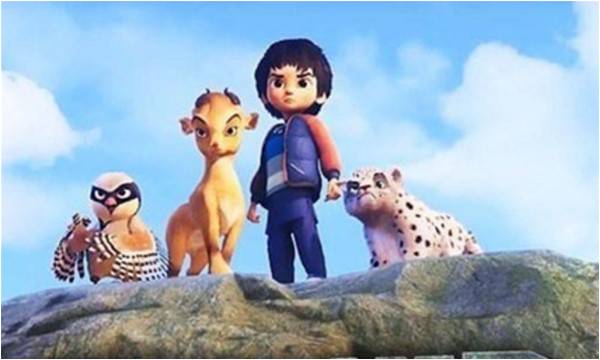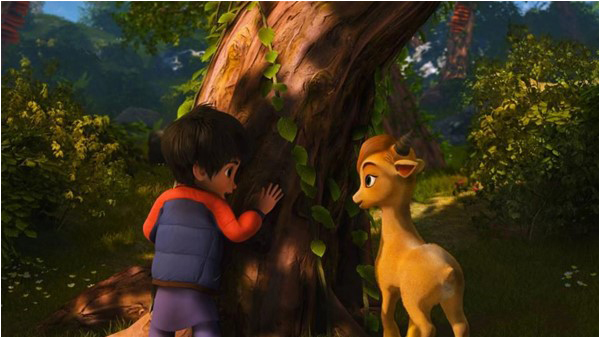
Pakistan finally has its own animated movie for children. Yes, it could’ve been better, yes there are quite a few basics that it missed out on, and yes this isn’t the first animated movie made in the country, but it will be the trailblazer in the genre – again, despite its flaws.
For a country that despite the TV boom in the previous couple of decades does not have a channel dedicated to children’s entertainment, ventures like Allahyar and the Legend of Markhor are much needed and should encourage others to follow suit. Even if that turns out to be the only achievement of the movie, Allahyar would be etched in history as a legend.

The aforementioned lack of entertainment media for children has meant that anyone having a shot at it has traditionally struggled. Most of the productions focus on morals and preaching – something Allahyar and the Legend of Markhor also exhibits – and less on the actual entertainment coefficient for the target audience. But that should continue to improve as more filmmakers take the leap of faith and fill the long existing vacuum.
This particular plunge sets exemplary visual standards and the quality of animation is absolutely top-drawer. Not only is the depiction of the scintillating beauty up north majestic, the attention to detail is clearly visible as well.
The story itself has the ingredients to match the visual experience. Allahyar (Anum Zaidi) is an eight-year-boy, living up both with his father – a Rangers official who shields wildlife – who has profound affection for animals and the ability to speak to them.
Allahyar comes across a chance encounter with a markhor Mehru (Natasha Humera Ejaz) whose life is in danger. While saving Mehru, Allahyar gets kidnapped himself by Mani (Ali Noor) and Bablu (Arieb Azhar).
Thence begins the journey of Allahyar and his friends that include a chakor Hero (Azfar Jafri) and a snow leopard Chakku – who is seeking revenge against Mani for killing his parents.
The father-son bond depicted in the storyline, and the central theme of the movie – affection for animals – make the film a relatable experience for many children. A prime example is Allahyar’s animosity for a teacher that mistreats a dog, an animal with many negative connotations and taboos associated in our society.

It isn’t just the animals, Allahyar is depicted as a kid who is fond of nature. He also has the bravery to take on the bad guys that is central to any character that is carved out as a hero for children.
Among other strengths for Allahyar and the Legend of Markhor is the background score. The soundtrack is spearheaded by Ali Noor and Natasha Humera Ejaz, who give the film the sound that it needs.
Many dialogues in Allahyar and the Legend of Markhor are memorable. The humour in parts is entertaining, especially considering the target audience, and would appeal both the parents and kids.
Even so, fittingly the core of the storyline is its messages that it successfully delivers. The film’s depiction of children as innocent beings with an intrinsic love for nature, and the lessons drawn out for them, are what makes Allahyar and the Legend of Markhor a quality experience.
For those adults that might not be accompanied by children, the film might be an underwhelming experience. This is strictly for the kids, and it’s safe to say that most of them would have a ball with it.
Also, considering that this is a trend-setter, soon one would hopefully be able to expect animated films that have adults as the target audience as well. As things stand, Allahyar and the Legend of Markhor deserves appreciation for setting the ball rolling.
For a country that despite the TV boom in the previous couple of decades does not have a channel dedicated to children’s entertainment, ventures like Allahyar and the Legend of Markhor are much needed and should encourage others to follow suit. Even if that turns out to be the only achievement of the movie, Allahyar would be etched in history as a legend.

The aforementioned lack of entertainment media for children has meant that anyone having a shot at it has traditionally struggled. Most of the productions focus on morals and preaching – something Allahyar and the Legend of Markhor also exhibits – and less on the actual entertainment coefficient for the target audience. But that should continue to improve as more filmmakers take the leap of faith and fill the long existing vacuum.
This particular plunge sets exemplary visual standards and the quality of animation is absolutely top-drawer. Not only is the depiction of the scintillating beauty up north majestic, the attention to detail is clearly visible as well.
The story itself has the ingredients to match the visual experience. Allahyar (Anum Zaidi) is an eight-year-boy, living up both with his father – a Rangers official who shields wildlife – who has profound affection for animals and the ability to speak to them.
Allahyar comes across a chance encounter with a markhor Mehru (Natasha Humera Ejaz) whose life is in danger. While saving Mehru, Allahyar gets kidnapped himself by Mani (Ali Noor) and Bablu (Arieb Azhar).
Thence begins the journey of Allahyar and his friends that include a chakor Hero (Azfar Jafri) and a snow leopard Chakku – who is seeking revenge against Mani for killing his parents.
The father-son bond depicted in the storyline, and the central theme of the movie – affection for animals – make the film a relatable experience for many children. A prime example is Allahyar’s animosity for a teacher that mistreats a dog, an animal with many negative connotations and taboos associated in our society.

It isn’t just the animals, Allahyar is depicted as a kid who is fond of nature. He also has the bravery to take on the bad guys that is central to any character that is carved out as a hero for children.
Among other strengths for Allahyar and the Legend of Markhor is the background score. The soundtrack is spearheaded by Ali Noor and Natasha Humera Ejaz, who give the film the sound that it needs.
Many dialogues in Allahyar and the Legend of Markhor are memorable. The humour in parts is entertaining, especially considering the target audience, and would appeal both the parents and kids.
Not only is the depiction of the scintillating beauty up north majestic, the attention to detail is clearly visible as well
Even so, fittingly the core of the storyline is its messages that it successfully delivers. The film’s depiction of children as innocent beings with an intrinsic love for nature, and the lessons drawn out for them, are what makes Allahyar and the Legend of Markhor a quality experience.
For those adults that might not be accompanied by children, the film might be an underwhelming experience. This is strictly for the kids, and it’s safe to say that most of them would have a ball with it.
Also, considering that this is a trend-setter, soon one would hopefully be able to expect animated films that have adults as the target audience as well. As things stand, Allahyar and the Legend of Markhor deserves appreciation for setting the ball rolling.

